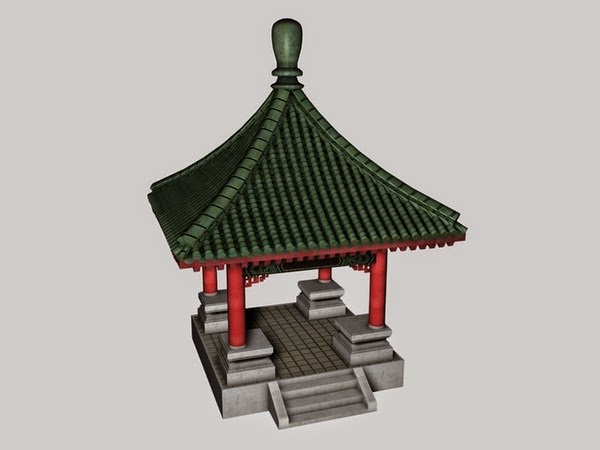I was advised to look more into texturing as the textures are very important when considering modular components can be tiled and placed along side each other. With this in mind, creating seamless textures is going to be a priority, however before attempting to create some of my own I would like to also research into materials from Chinese architecture as to get some practise for the real thing later on in the project.
The Chinese used a lot of wood in their structures and also later on some stone, however it was mostly pressed earth and wood. But why did they chose to use wood over the stone? Stone as they would have known was always to last longer. The wood has environmental issues such as weathering fire hazard and insect damage, however they still chose to build with wood materials, but why?
"Wooden buildings last long enough for more than several generations to live under, but not long enough to become part of archaeological excavations. Buildings were made to be lived under, they weren't made to last thousands of years solely for our benefit. Those that were built to last, such as tombs, did last."
Finding that the structures are made of wood was easy, however all books and websites seem to only suggest wood and not any particular type of wood. However after an hour, I found a website which gave a hint as to what wood was used and why. This wood was White Cedar or also know as Melia azedarach, or even Chinaberry tree. This tree is often found in southeast Asia and produces toxic berries but is mainly used for it's timber, the wood is of medium density and varies colours from light brown to dark red. The seasoning process of the 'Chinaberry' tree is relatively simple as the planks dry without cracking and also have a resistance to fungal infection. This would mean that having huge cracks within the texture isn't required.
 |
| Melia Azedarach/White Cedar/ Chinaberry |
 |
| Small texture file of dark wood |
 |
| Photograph courtesy of Ronald G.
Knapp 1987, Shifuxiang, Zhejiang Province |
Tiles are a consistent part of Chinese architecture and keeps the insides of the construction dry, the materials used is clay from the earth, however they use a special construction method to make these which I found that will also help me with my model tile construction.
To the right you can see a woman rolling clay out to the dimensions of the block on the floor, this gives the tile a relatively manageable shape with the tile creation.
 |
| Photograph courtesy of Ronald G. Knapp 1987, Li village, Jiande xian, Zhejiang Province |
The clay is then rolled over a 'pot' like shape with the makers markings on them, after it has dried it is removed and separated into quarters, which must mean the angle that a tile must be is 45 degrees. It is the fired and painted if necessary.
The walls of the buildings are not load bearing walls and so are made with compacted earth which is then painted white to protect the earth from insects and also weather. I also found that the flooring is made of large slabs of stone from the mountains, From this research I can then find materials that will be needed and create some tileable textures for practise.
Links:
Describes the wood used as White Cedar:
http://www.designboom.com/architecture/the-art-of-timber-construction-chinese-architectural-models/
Chinaberry pictures:
http://www.delange.org/ChinaBerry/ChinaBerry.htm
Clay tile creation:
http://depts.washington.edu/chinaciv/3artile.htm#tile3
Darkwood creation:
http://www.tutorialchip.com/freebies/showcase-of-high-resolution-dark-wood-texture-designs/






